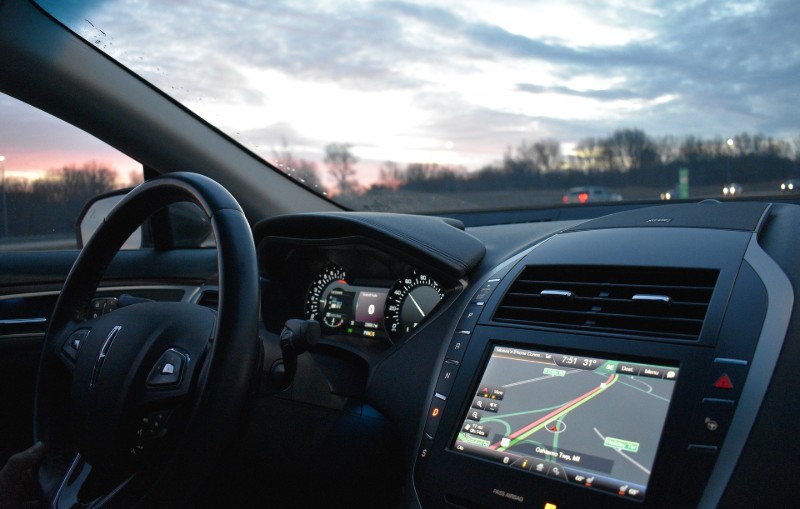The automotive industry is seeing a radical transformation with car manufacturers introducing awe-inspiring new technologies that seem to be pulled straight from the future. Connected cars and concept car designs are refined, more ergonomic, and so futuristic that you have to think twice and ask yourself if they are aesthetically brilliant, or just plain useless.
Car buyers have always wanted better horsepower and luxury, but these days, having better connectivity in your car also affects a prospective purchase. So, what exactly is a connected car and which features are most demanded? Let’s find out!
What is a Connected Car?
Connected cars are linked wirelessly to other devices, such as smartphones or computers, to provide useful data or services to the driver. Benefits include infotainment services, GPS tracking, and vehicle diagnostics. Truly connected cars of the future will be able to process huge volumes of data to enable smart autonomous car driving, detailed sensory information (weather, car part diagnostics), and connect to homes and even to other cars.
A few years back, cars were used for driving purposes only. Today they are equipped with Wi-Fi hotspots, self-parking technology, and road hazard detection systems. Here are some of the most demanded connected car features you need to know.
#1 Internet Connectivity in Cars
In 1997, General Motors launched the first telematics system by introducing OnStar. Now, connected-car consumers want to have OnStar as a standard feature for providing 4G LTE Wi-Fi, which requires a data plan. It is estimated that 90 percent of new cars will be connected to the internet by 2020. The car itself will work as a digital hotspot that can be used to access the internet on a phone or a laptop.
#2 App to Car Connectivity
Smartphone apps are giving consumers easy access to their cars. Ford Escape is the best example, offering consumers a three to five year free subscription to SYNC, an app that provides connectivity between consumers and cars. With this feature, car buyers can lock and unlock their cars remotely. Also, they can check their fuel status and locate their vehicles on a real-time map.
#3 Protecting Young Drivers with “Curfews”
The accident rate regarding teenage drivers has increased startlingly. New connected cars are offering parents features to keep track of their young drivers. Hyundai has designed a curfew and Geofence service that notifies parents if their child is driving out of predetermined hours, or if the car is traveling outside of a virtual boundary. Parents can track the exact location of their kids and know how long they are behind the wheel.
#4 Google Earth-enabled Navigation System
Navigation systems are not novel in connected cars, but with the latest technology, now, car users can navigate, check real-time traffic, and compare the prices of nearby gas stations. It has become one of the most demanded features in 2019.
#5 Vehicle to Vehicle Communication
With technological advancement in the telematics industry, cars can speak to other cars. The shared information can help avoid accidents and even facilitate gas transactions. With this feature, cars can share their speed and interact with intelligent traffic signals, too. Due to the surprising benefits of vehicle-to-vehicle communication technology, most car buyers want this feature in their cars, and it is predicted that all new cars will offer this feature in 2023.
#6 Air Updates
Now connected cars can not only prevent accidents, but also prevent car buyers from having to walk into the dealership. Tesla Model S is the best example of improved OTA (over-the-air) updates. With this feature, the company can update the software of the car without having the customer bring it in.
#7 Entertainment
Entertainment has become one of the most popular and demanded features in modern connected cars. This category alone is expected to reach $13 billion in revenue in 2020. Some vehicles include video-based dash systems that can even play streaming media content. This includes integration with popular platforms like Pandora, Yelp, Facebook, Netflix, and many others.
#8 Safety Features
Most of the consumers prefer safety features over any other category. The top two preferred features in this category are emergency call systems and vehicle recovery services (in case their car is stolen). Connected-safety features are going to reel in $44 billion in 2020. Plus, safety features will be one of the most influential elements for auto sales.
#9 Driver Assistance and Hands-free support
A driver assistant can suggest a faster route or warn of traffic on the road, while a hands-free support system allows the user to communicate without touching the device. Both technologies help drivers to focus on the road by eliminating distractions. Most car consumers want in-car voice commands and live traffic updates.
#10 Remote Parking
Using a touch-screen key, drivers can get out of the car and command the car to pull forward to back into space. BMW’s latest 7 Series model offers this remote control parking feature, and new car buyers want this feature in their connected cars.
Are Consumers Eager to Pay?
It’s clear consumers want all of these features in their connected cars, but that doesn’t mean they are eager to pay for them. The connected car market is expected to exceed $37 billion in the U.S. by 2023.
The real question is, who is paying for these in-car features? Connected cars aren’t affordable, and their cost is predicted to be the biggest barrier to their adoption.
However, this issue can be resolved by leasing a car or buying someone’s lease through car leasing websites like QuitALease.com. Car buyers can save a lot of money by taking over someone’s car lease.
But, with an embedded connection, there is an additional bill to be paid in terms of connectivity and consumers aren’t willing to pay. Ultimately, automakers will have to look for ways to make services more affordable.
Image by Lynda Sanchez from Pixabay










